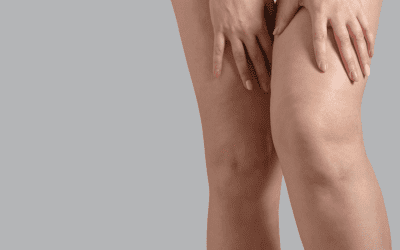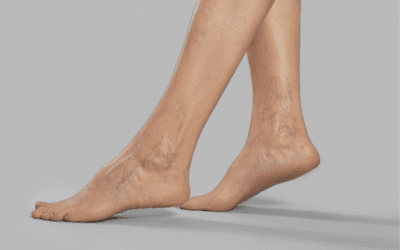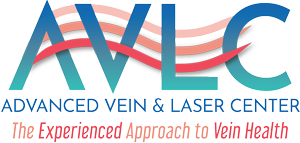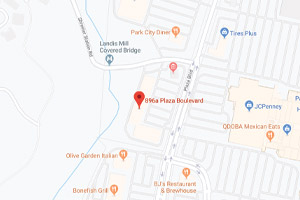| Understanding the stages of venous leg ulcers is crucial for effective management and prevention. By recognizing the causes, seeking appropriate treatment, and implementing preventive measures, individuals can minimize the impact of leg ulcers on their quality of life. It’s essential to consult with a vein specialist at Advanced Vein and Laser Center where the healthcare professionals are specialists in wound care and can help you develop a tailored treatment plan. |
Venous leg ulcers are a common and often debilitating condition that affects many individuals worldwide. They can significantly impact a person’s quality of life, causing pain, discomfort, and limited mobility.
In this blog post, we will delve into the stages of venous leg ulcers, their causes, available treatments, and prevention strategies. By understanding these aspects, individuals can take proactive steps to manage and potentially prevent venous leg ulcers.
What are Venous Leg Ulcers?
Venous leg ulcers are open sores or wounds that typically develop on the lower legs, near the ankles. They are the most common type of leg ulcers and are primarily caused by poor venous circulation.
Venous leg ulcers occur when damaged or weakened valves in the leg veins prevent blood from flowing back up to the heart efficiently. This leads to a build-up of pressure, fluid leakage, and eventually the formation of ulcers.
What Does a Leg Ulcer Look Like?
Leg ulcers can vary in appearance depending on their cause and stage. Venous leg ulcers typically present as shallow, irregularly shaped sores with a red base. They may be surrounded by swollen and discolored skin.
Arterial ulcers are often deeper and exhibit a “punched-out” appearance, with a pale or grayish base. Diabetic ulcers are characterized by a deep, circular shape, often with calloused or thickened edges. Pressure ulcers can range from superficial red patches to deep craters.
What Causes Venous Leg Ulcers?
Venous leg ulcers are usually caused by underlying venous insufficiency, which is a condition that impairs the normal functioning of the veins in the legs. Here’s a breakdown of the causes and contributing factors:
- Venous insufficiency: This is the primary cause of most venous leg ulcers. Venous insufficiency occurs when the valves in the leg veins become damaged or weakened, leading to improper blood flow back to the heart. As a result, blood pools in the veins, increasing pressure and causing fluid to leak into the surrounding tissues.
- Deep vein thrombosis (DVT): DVT is a blood clot that forms in the deep veins of the legs. It can obstruct normal blood flow and cause venous insufficiency, eventually leading to the development of leg ulcers.
- Varicose veins: Varicose veins are swollen, twisted veins that often occur due to weakened or damaged valves in the leg veins. Varicose veins increase the risk of developing venous insufficiency and, consequently, leg ulcers.
- Obesity: Excess weight can put additional pressure on the leg veins, leading to venous insufficiency and the development of ulcers.
- Previous leg injuries: Trauma or injuries to the legs, such as fractures or deep cuts, can damage the veins and impair their ability to transport blood efficiently. This can contribute to venous insufficiency and the formation of ulcers.
- Prolonged sitting or standing: Individuals who spend long periods sitting or standing without movement can experience reduced blood flow in the legs, increasing the risk of venous insufficiency and ulcers.
- Age: Venous leg ulcers are more common in older individuals as the veins become less elastic and their valves become weaker with age.
- Genetic factors: Some people may inherit a predisposition to develop venous insufficiency and leg ulcers.
What Are The Danger Of Leg Ulcers If Left Untreated?
Leg ulcers can lead to various complications if left untreated or poorly managed. These include:
- Infection
- Cellulitis (skin infection)
- Abscess formation
- Gangrene, and even systemic infections
- Amputation may be required, in severe cases.
Moreover, leg ulcers can significantly impact a person’s quality of life, causing pain, immobility, social and psychological distress, and a decreased ability to perform daily activities.
What Treatment Is Available For Venous Leg Ulcers?
The treatment of venous leg ulcers typically involves a multidimensional approach aimed at addressing the underlying causes, promoting healing, and preventing recurrence.
The best treatment for leg ulcers depends on the underlying cause and the specific characteristics of the ulcer. Here are some common treatment options that may be recommended:
- Compression Therapy: This is a standard treatment for venous leg ulcers. Compression bandages or stockings are used to apply pressure on the affected area, improving blood circulation and reducing swelling. It helps to promote healing and prevent ulcer recurrence.
- Wound Dressings: Various types of dressings, such as hydrocolloid dressings, foam dressings, or alginate dressings, may be used to create a moist healing environment, protect the wound from infection, and facilitate the healing process. The choice of dressing depends on the characteristics of the ulcer and the stage of healing.
- Debridement: Debridement is the removal of dead or damaged tissue from the wound bed. It can be performed through different methods, including surgical debridement, enzymatic debridement, mechanical debridement, or autolytic debridement. Debridement helps to promote granulation tissue formation and facilitate wound healing.
- Topical Medications: Depending on the specific needs of the ulcer, healthcare professionals may prescribe topical medications such as antimicrobial creams or ointments to prevent or treat infections, promote healing, or manage inflammation.
- Offloading and Elevation: For ulcers caused by pressure or friction, offloading the affected area by using specialized footwear, orthotic devices, or cushions can help reduce pressure and promote healing. Elevating the leg can also help improve blood circulation and reduce swelling.
- Treatments for Underlying Conditions: If the leg ulcer is caused by an underlying condition such as venous insufficiency, arterial disease, or diabetes, treating and managing the underlying condition is crucial for ulcer healing and prevention of recurrence. This may involve medications, lifestyle modifications, or surgical interventions.
- Regular Follow-up and Monitoring: Leg ulcers require ongoing care and monitoring to ensure proper healing and to identify any potential complications. Regular follow-up visits with healthcare professionals are essential to assess the progress of the ulcer, adjust the treatment plan if necessary, and provide necessary guidance and support.
In more severe cases, advanced interventions such as skin grafts or surgical procedures may be necessary.
What is the Fastest Way to Get Rid of a Leg Ulcer?
While each case is unique, it is important to note that healing venous leg ulcers takes time and patience. There is no overnight solution for complete ulcer resolution.
However, following a comprehensive treatment plan, adhering to recommended lifestyle changes, and consistently practicing proper wound care can expedite the healing process. It is essential to work closely with healthcare professionals to monitor progress and adjust the treatment plan accordingly.
Seek Treatment From The Leading Vein Specialists in York & Lancaster, PA.
At every stage of your vein issues, it’s important to see a professional to help you in healing venous insufficiency and achieving a life of normalcy and physical comfort.
Not only can they help you finally heal this condition, but they can also treat the vein issues that caused them in the first place. Visit one of our centers for an in-depth appointment and put your vein troubles to rest. Ready to book your appointment? Give us a call today.

Dr. Steven Heird, MD, is a distinguished specialist in the treatment of venous disease and vascular surgery. As one of the dedicated doctors at the Advanced Vein and Laser Center, located in York and Lancaster, Pennsylvania, Dr. Heird has made a significant impact in the field of vein care. His expertise and commitment to patient well-being have earned him a trusted reputation among his peers and patients. Dr. Heird’s work at the Advanced Vein and Laser Center reflects his passion for providing compassionate and effective vein care, improving the lives of those he serves with precision and care.








0 Comments